
Click here to download a PDF of this manual in printer friendly format.
Construction steps
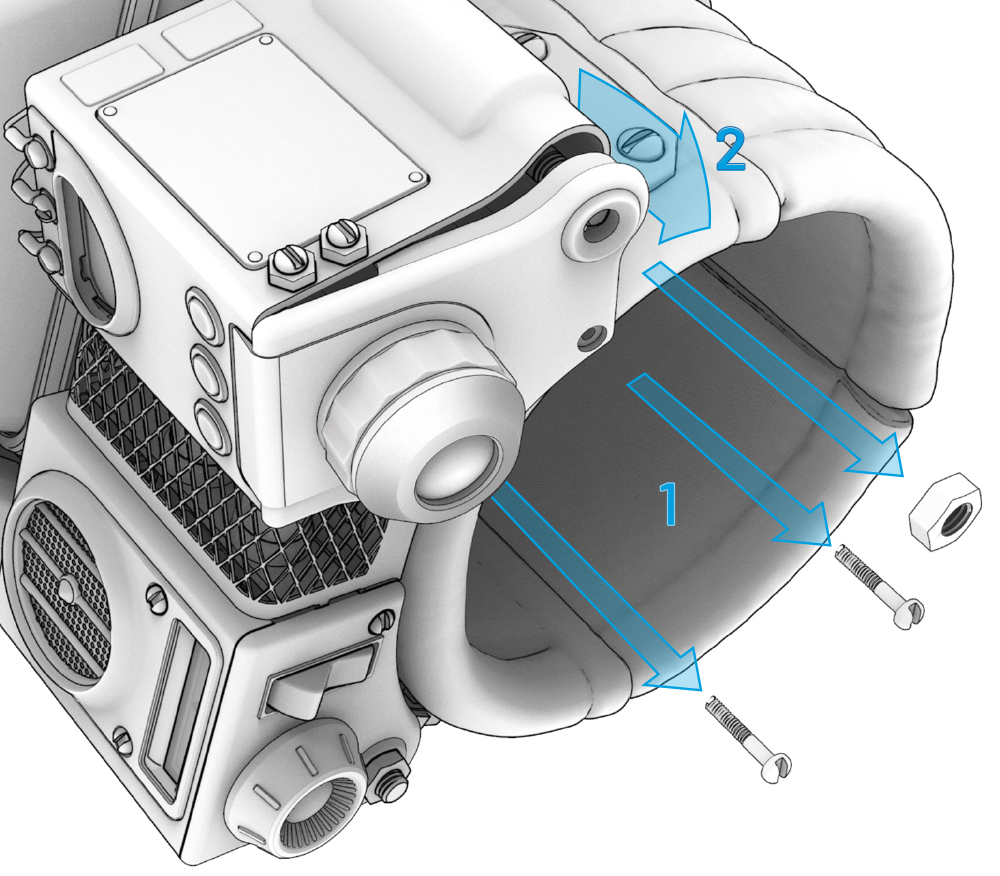
- Unscrew the two slot-head screws, and unscrew and remove the M5 nut from the sensor housing.
- Pull the back edge of the sensor side panel away from the main housing so that a gap of about 5 mm opens up at the back.
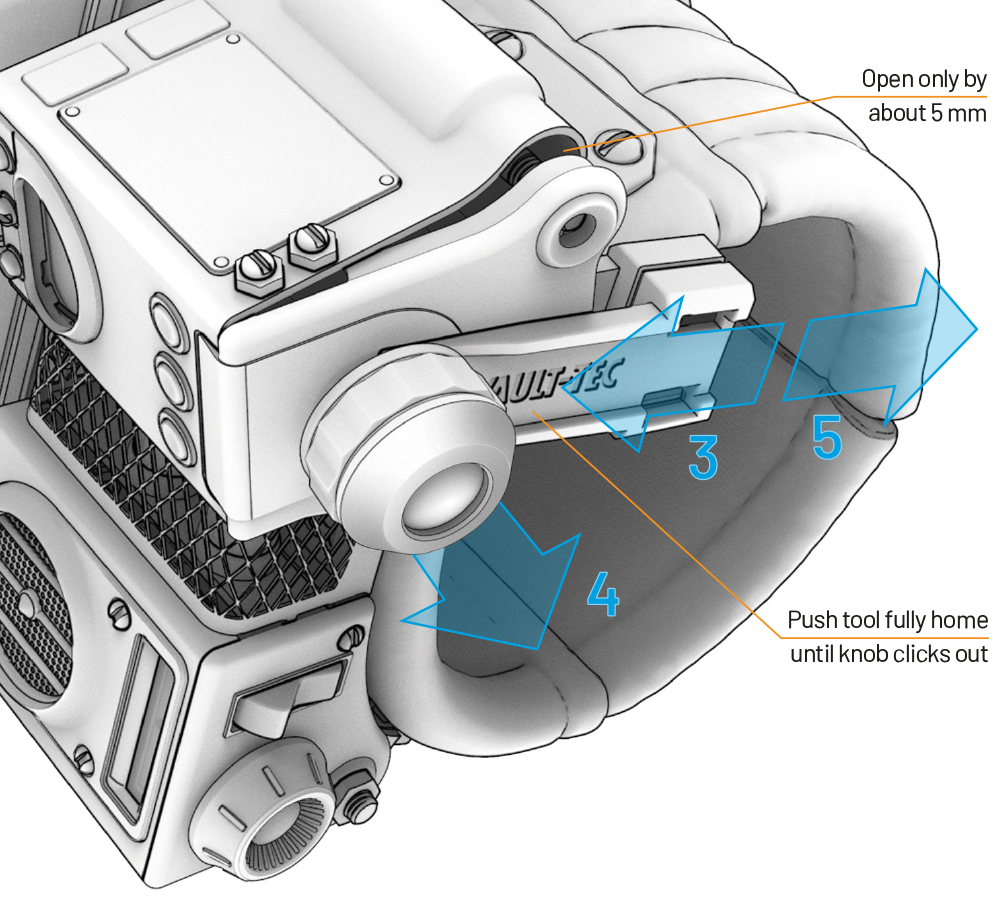
- Insert the Geiger control removal tool so that the fork feature engages with the inner knob shaft and push it home until the knob clicks out of the sensor side panel (rotate the knob if it is not coming loose).
- Pull the knob out until it catches on the inside of the hazard panel.
- Slide the tool out and push just the side panel back in to place.
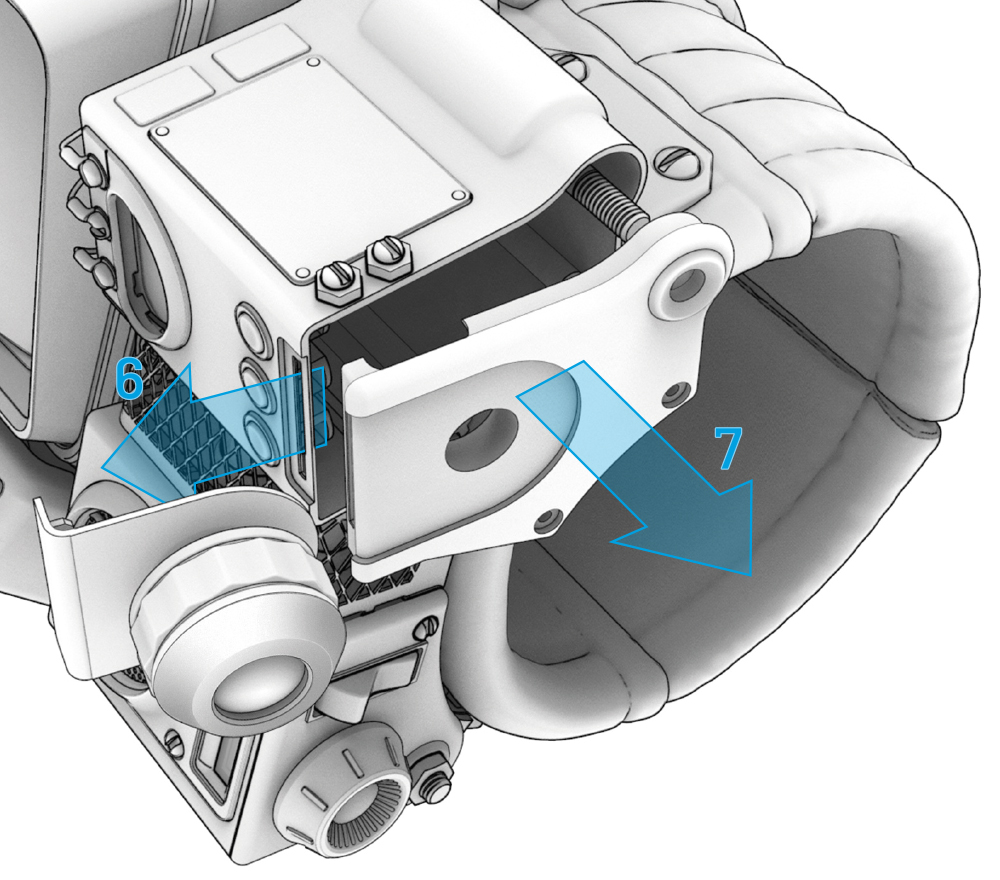
- Slide the hazard panel forward to disengage its front tab from locking the sensor side panel to the main housing and remove it.
- Remove the sensor side panel.
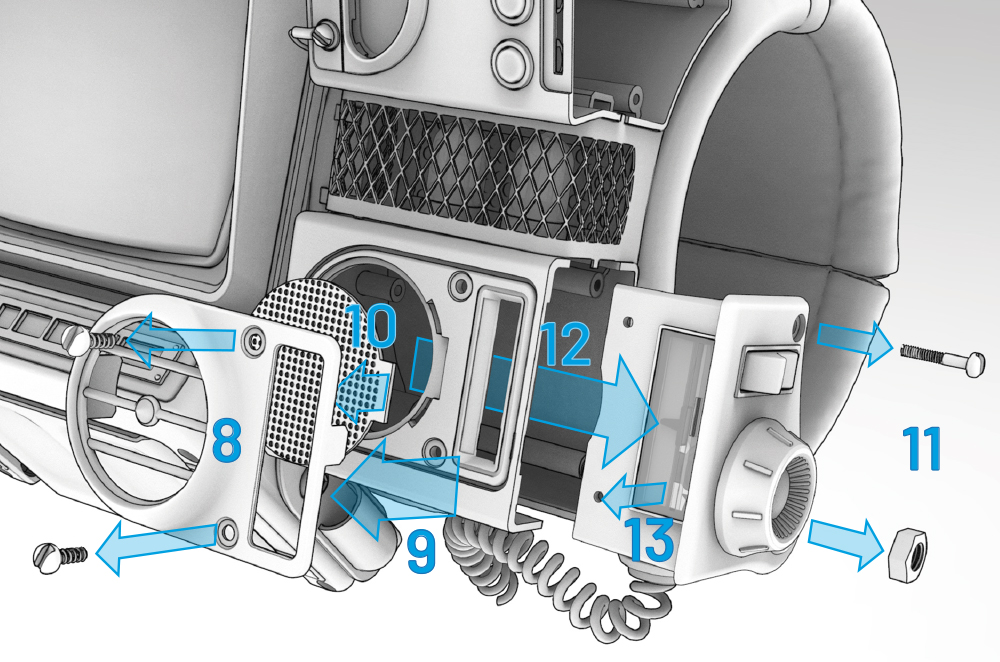
- Unscrew the speaker bezel slot-head screws.
- Remove the speaker grille bezel. Note: the bezel is located with a tab at each end. Do not lever the bezel off at an angle, as that could damage the tabs. Gently pry the bezel off, a little at a time from each side, so that it comes away straight from the main housing.
- Remove the non-functional speaker grille.
- Unscrew the screw and the M5 nut from the radio side panel.
- Undock the holotape-player end of the coiled cable and slide out the non-functional radio side panel, coiled cable, and the attached mechanism.
- Remove the radio dial glass.
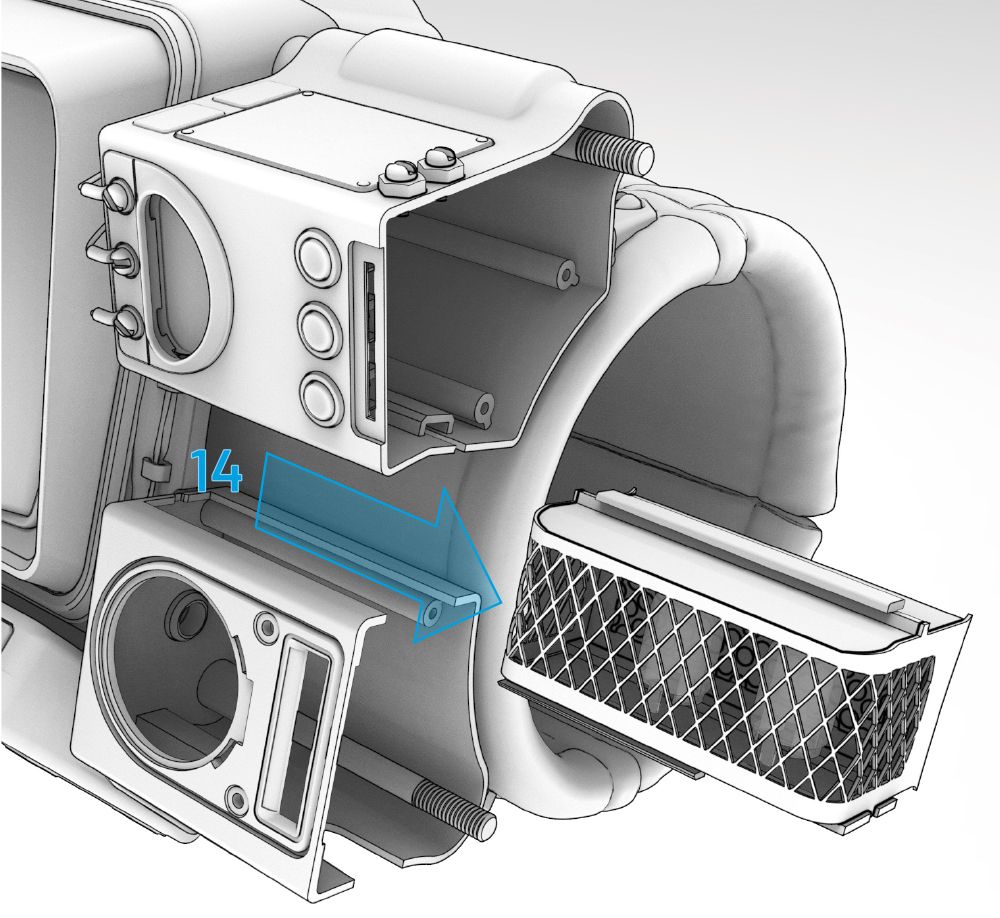
- Slide out the whole vacuum tube sub-assembly.
- Step not shown. Dismantle the vacuum tube sub-assembly.
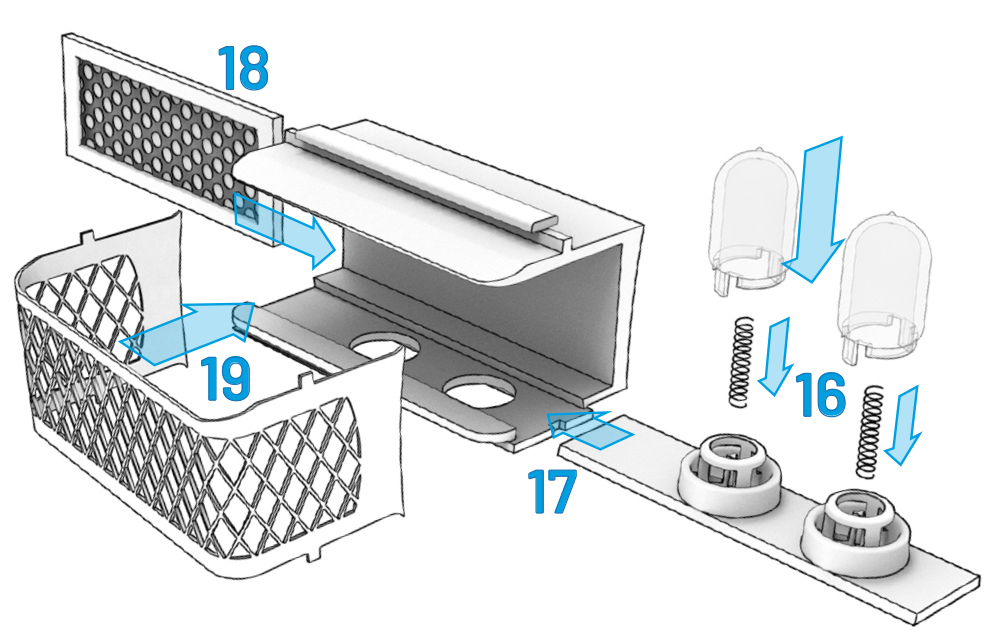
- Place the two small springs on to the new tube support tray and fit the vacuum tubes to the tray, over the springs.
- Slide the tray into the new vacuum housing.
- Slide the original back panel into the new vacuum housing.
- Fit the vacuum grille to the front of the vacuum tube sub-assembly. IMPORTANT NOTE: for the next step, take care not to touch or damage the speaker cone. The speaker has a strong magnet, so be careful not to let any steel screws or other metal objects become attracted to the front of the speaker as this will cause serious damage to the speaker and the speaker cone.
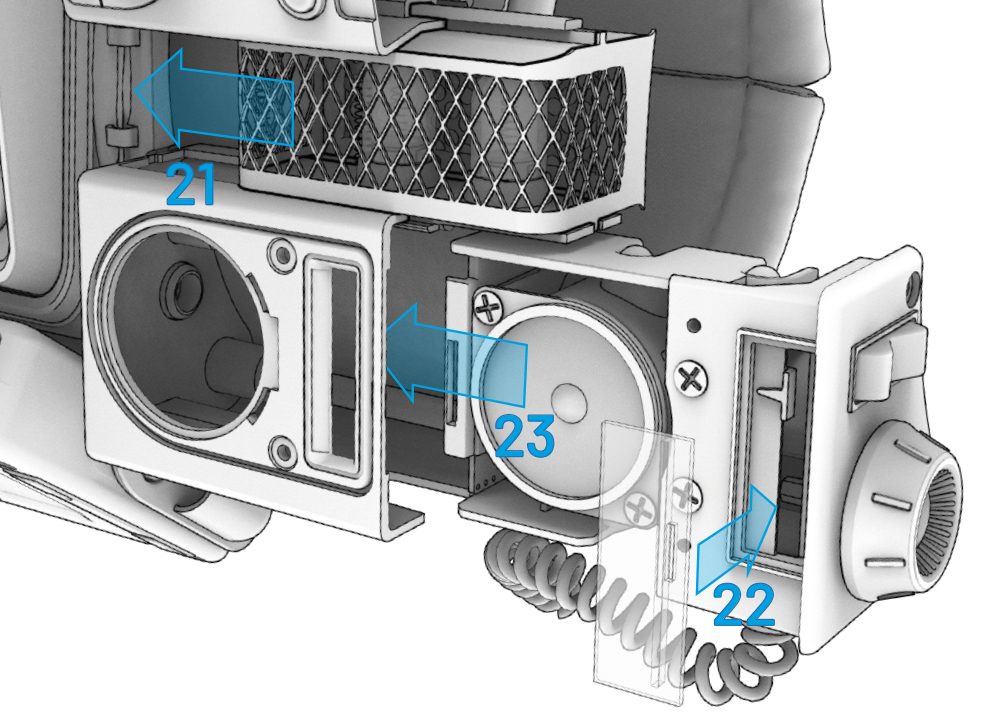
- Step not shown, TAKING CARE NOT TO PRESS ON THE SPEAKER, fit three power cells into the back of the module, ensuring that the polarity is correct and the removal ribbon is behind the cells.
- Slide the new vacuum tube sub-assembly back into place between the sensor and radio housings.
- Fit the radio dial glass.
- Carefully slide the radio into the radio housing, ensuring that the coiled cable grommet lines up with its respective recess in the underside of the radio main housing and that the M5 bolt locates through the hole in the radio module side panel.
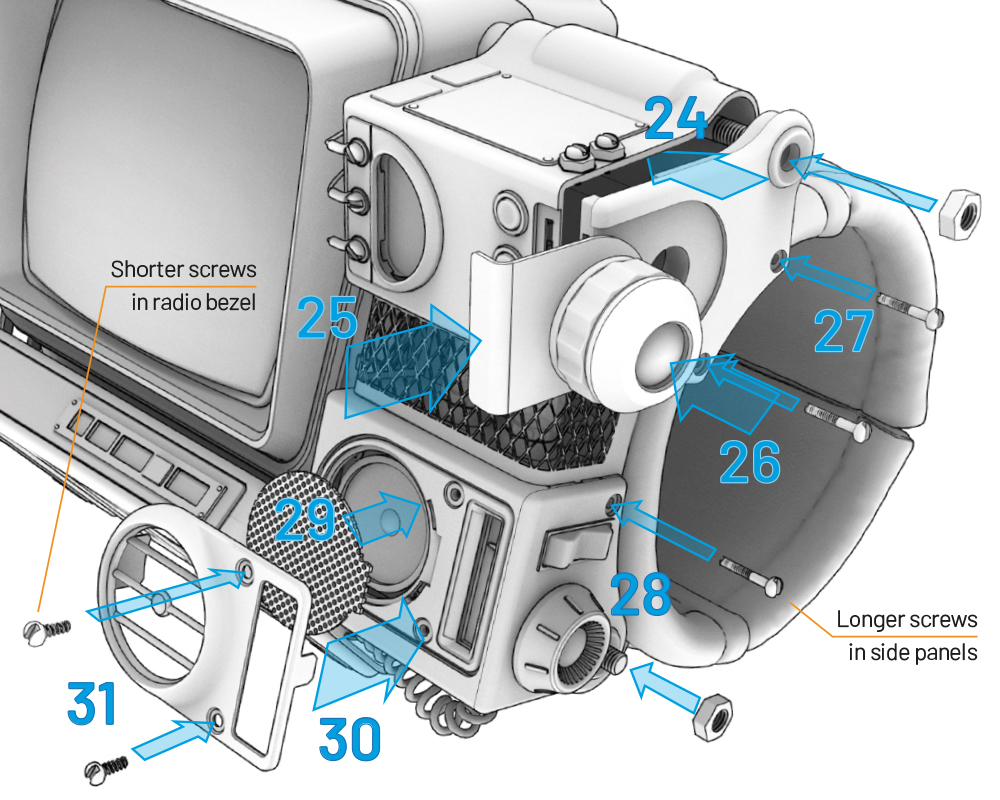
- Fit the sensor side panel.
- Slide the hazard panel into place from the front so that its tab locks into the side panel slot.
- Click the sensor control knob home.
- Fit the sensor panel screws and gently tighten the M5 nut.
- Fit the radio side panel screw and M5 nut.
- Fit the new speaker grille.
- Fit the speaker bezel.
- Secure bezel with the two slot-head screws.
Operating instructions
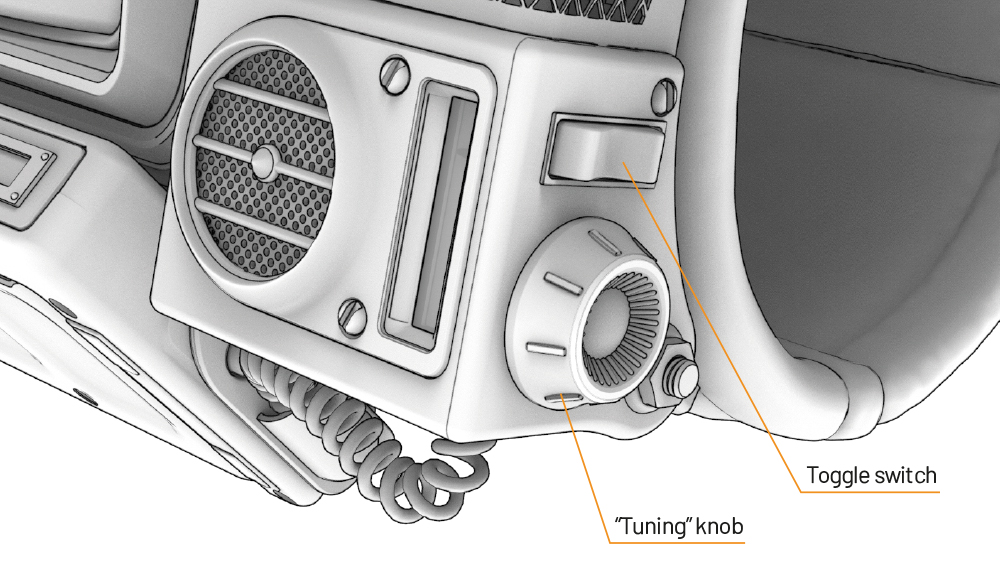
TOGGLE SWITCH: When the radio is off – a single click powers up. When the radio is on – a single click forwards and a single click backwards scans up and down FM radio channels; a double click powers down. Long press forwards or backwards for volume up and volume down.
“TUNING” KNOB: Turning the “tuning” knob adjusts the dial pointer and “tunes” radio to one of 20 randomly selected Wasteland broadcasts.
IMPORTANT NOTE: this is a small radio with a short coiled-cable antenna, and is intended only for fun use. Radio reception will vary greatly depending on atmospheric conditions and the distance to your nearest broadcasting station. If you experience poor reception, please move the Pip-Boy to a position with a stronger radio signal.

